.
The Top 10 Earthwatch Expeditions of 2018
The list is here! The Top 10 expeditions of 2018, according to our volunteers! To find out what made the list, we tallied evaluation scores submitted by volunteers—scores that factor in safety, support, team dynamic, research contribution, training, overall satisfaction, and more. A common theme throughout the reviews for all of these projects is the way in which the researchers made volunteers a part of the scientific process, the opportunity they had to immerse themselves in nature, and the ways in which they were able to engage with local communities and experience new cultures.
.
.
1. Conserving Wetlands and Traditional Agriculture in Mexico
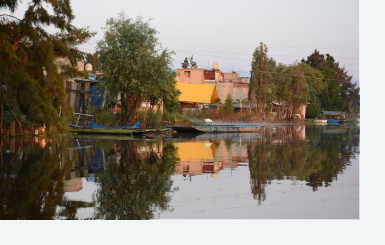 The wetlands of Xochimilco, located south of Mexico City, form a unique ecosystem for aquatic species as well as over 140 species of migrating birds. They’re also used for traditional agriculture. But these wetlands are suffering from water shortages and diminishing water quality, stemming largely from urbanization. Volunteers and researchers are assessing whether using a more organic and sustainable agricultural approach, rather than the intensive agriculture that has been increasingly used over the past few years, would enhance general welfare in Xochimilco and protect one of the region’s last remaining wetlands.
The wetlands of Xochimilco, located south of Mexico City, form a unique ecosystem for aquatic species as well as over 140 species of migrating birds. They’re also used for traditional agriculture. But these wetlands are suffering from water shortages and diminishing water quality, stemming largely from urbanization. Volunteers and researchers are assessing whether using a more organic and sustainable agricultural approach, rather than the intensive agriculture that has been increasingly used over the past few years, would enhance general welfare in Xochimilco and protect one of the region’s last remaining wetlands.
.
The saying beneath my high school yearbook photo says that my goal was ‘to work with Central America’s indigenous peoples in their agrarian efforts.’ I completed my B.S. in agronomy at Rutgers University, NJ, and intended to join the Peace Corps to fulfill that goal. But—as happens in life—certain circumstances prevented me from achieving my goal. So 40+ years later, when I saw the title of this expedition, I knew that I couldn’t pass it up; it was as close to my goal as I would ever get. There is absolutely nothing that could’ve been done differently to improve the experience that I had on this Earthwatch expedition. For me, it was truly a dream come true.
— Nichol Swenson
.
.
2. Mapping Biodiversity in Cuba
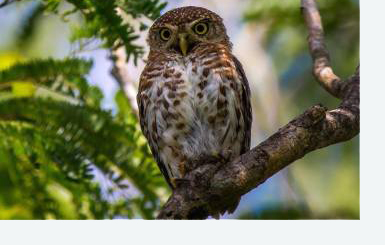 In Cuba’s Lomas de Banao Ecological Reserve and Tunas de Zaza Wildlife Refuge—two biodiversity hotspots—researchers are studying the types of species that live within this protected habitat, as well as their population size. By establishing a baseline understanding of the wildlife that inhabit the reserve, over time, researchers hope to monitor the long-term impacts of human influence as tourism and development increases. The findings volunteers are helping to collect are greatly contributing to managing these protected areas and helping to conserve Cuba’s biodiversity at a time when development and threats to wildlife are on the rise.
In Cuba’s Lomas de Banao Ecological Reserve and Tunas de Zaza Wildlife Refuge—two biodiversity hotspots—researchers are studying the types of species that live within this protected habitat, as well as their population size. By establishing a baseline understanding of the wildlife that inhabit the reserve, over time, researchers hope to monitor the long-term impacts of human influence as tourism and development increases. The findings volunteers are helping to collect are greatly contributing to managing these protected areas and helping to conserve Cuba’s biodiversity at a time when development and threats to wildlife are on the rise.
.
I wanted to visit Cuba. Because of the travel restriction, I joined this expedition. In comparison with regular tourism, I was more engaged with the Cuban people I worked with. They became my friends and I learned more about Cuba than I would as a tourist. This in-depth connection with the place and people enhanced my experience. The beauty of the place is overwhelming. I enjoyed every minute in the mountains. Every encounter with a bird, a snake, an anole, or a frog made me excited. After the hard work on a hot and humid day, a swim in the creek was simply wonderful.
— Jin Feng
.
.
3. Uncovering the Mysteries of Colorado’s Pueblo Communities
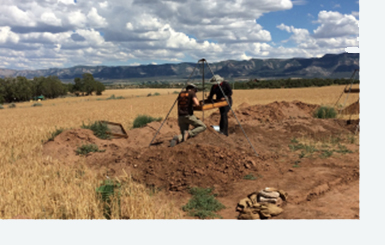 In Southwest Colorado, researchers are working to gain a greater understanding of resource sustainability and the impacts of cultural and environmental downturns on ancestral Pueblo communities. Volunteers collect data that allow researchers to gain a greater understanding of resource sustainability, the natural and cultural impacts of environmental downturns, ancient communities and regional systems, migration, and the ever-changing relationship between humans and their environment.
In Southwest Colorado, researchers are working to gain a greater understanding of resource sustainability and the impacts of cultural and environmental downturns on ancestral Pueblo communities. Volunteers collect data that allow researchers to gain a greater understanding of resource sustainability, the natural and cultural impacts of environmental downturns, ancient communities and regional systems, migration, and the ever-changing relationship between humans and their environment.
.
I have participated now on several Earthwatch expeditions, and I think this project had the greatest impact on my worldview. I did not expect to be so moved by archaeology, but learning from the lead scientists and local tribe members about the meaning of the artifacts we were collecting and the way the American government treats descendant groups was truly a mind-opening experience.
— Zoe Foster
.
.
4. Sea Otters and Seagrass in Alaska
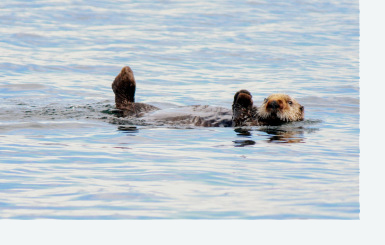 Sea otter populations worldwide fell to near extinction during the fur trade, but have made a critical comeback in Southeast Alaska over the past 50 years. But as sea otter populations have grown, they have increasingly come into conflict with fishermen over limited food resources. By studying the impact of sea otters on critically important seagrass ecosystems, volunteers are helping scientists demonstrate the role these animals play within their environment. If sea otters have a positive impact on seagrass in this region, then conserving both sea otters and seagrass becomes a matter of global importance.
Sea otter populations worldwide fell to near extinction during the fur trade, but have made a critical comeback in Southeast Alaska over the past 50 years. But as sea otter populations have grown, they have increasingly come into conflict with fishermen over limited food resources. By studying the impact of sea otters on critically important seagrass ecosystems, volunteers are helping scientists demonstrate the role these animals play within their environment. If sea otters have a positive impact on seagrass in this region, then conserving both sea otters and seagrass becomes a matter of global importance.
.
The Sea Otters and Seagrass in Alaska expedition involved a range of interesting activities: counting and observing the ever-charming sea otters, analyzing the impact of otter foraging, surveying and sampling sea grass, documenting tidal ecosystems, and processing prey and grass samples in the onsite lab. The scientists were very knowledgeable, extremely enthusiastic, and a lot of fun. They were always willing to patiently and pleasantly answer all our questions and teach us how to document, analyze, and interpret the valuable data we were collecting…While early rising, wet weather and water access created an occasional challenge, it was well worth it to work with delightful animals in a beautiful sea and forest setting, as well as being exposed to fascinating local culture on our recreation day. I highly recommend this project.
— Kenneth Dubuque
.
.
5. Climate Change, Huckleberries, and Grizzly Bears in Montana
 In “big sky country” in northwest Montana, climate change threatens to impact the availability and abundance of huckleberries – a major food resource for grizzly bears and other wildlife. Using experimental methods, volunteers are helping scientists to measure the effects of individual changes in weather and insects on the success of huckleberries. Scientists will combine this with other data to build maps to identify where high- and low-productivity huckleberry patches are likely to be each year. This knowledge can help to predict the movement of grizzlies, enabling wildlife managers to prevent conflict with humans.
In “big sky country” in northwest Montana, climate change threatens to impact the availability and abundance of huckleberries – a major food resource for grizzly bears and other wildlife. Using experimental methods, volunteers are helping scientists to measure the effects of individual changes in weather and insects on the success of huckleberries. Scientists will combine this with other data to build maps to identify where high- and low-productivity huckleberry patches are likely to be each year. This knowledge can help to predict the movement of grizzlies, enabling wildlife managers to prevent conflict with humans.
.
Wonderful experience in nature and a great opportunity to learn about the effects of climate change on the ecosystem, which bears and huckleberries depend on. Learned a lot and had a wonderful opportunity to see life of a scientist doing field work through a week. Our project manager and lead scientist were very passionate about sharing knowledge with us and always made time to answer any questions or address any doubts we had. Glad to contribute to studies about the environment.
— Tricia Chong
.
.
6. Conserving Wild Bees and Other Pollinators in Costa Rica
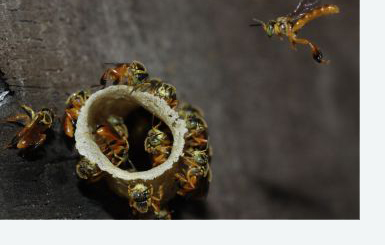 Dependence on pollinators is even more important in the tropics than in the rest of the world, as nearly all tree species in the tropics are pollinated by the diverse species of bees and butterflies, among other pollinators. But it is unclear what would happen if pollinator communities were to be removed entirely. Volunteers are examining how pollinator species and the services they provide will be affected by a changing climate and studying how forest cover can influence pollinators.
Dependence on pollinators is even more important in the tropics than in the rest of the world, as nearly all tree species in the tropics are pollinated by the diverse species of bees and butterflies, among other pollinators. But it is unclear what would happen if pollinator communities were to be removed entirely. Volunteers are examining how pollinator species and the services they provide will be affected by a changing climate and studying how forest cover can influence pollinators.
.
This trip allowed me to support basic research and interact with Costa Rican farmers in a spectacular area. Every day brought another unbelievable view. I was able to experience the cloud forest at Monteverde on a day off, and it was thrilling to see all the birds with the help of Oscar, the supernaturalist!
— Rebecca Turner
.
.
7. Loon Conservation in South Carolina
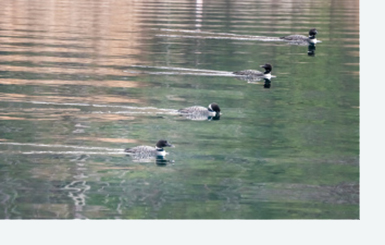 Although loons typically winter in marine environments along coastlines, some use freshwater reservoirs. Roughly 150 to 200 Common Loons winter in Lake Jocassee, South Carolina. By studying these birds in a pristine environment, volunteers are assisting scientists in better understanding the factors that influence their health and survival in the winter.
Although loons typically winter in marine environments along coastlines, some use freshwater reservoirs. Roughly 150 to 200 Common Loons winter in Lake Jocassee, South Carolina. By studying these birds in a pristine environment, volunteers are assisting scientists in better understanding the factors that influence their health and survival in the winter.
.
You’ll spend up to 4 hours on a beautiful lake monitoring loon behavior. While data gathering can sometimes be a bit tedious, the observations are exciting and the environment is magnificent. The team dynamic is a big part of enjoying the experience and I have found on my two expeditions so far that the type of people you interact with is always a joy. The science behind the expedition is very interesting and makes the whole expedition experience well worthwhile.
— Howard Goldstein
.
.
8. Discovering Ancient Societies in Portugal
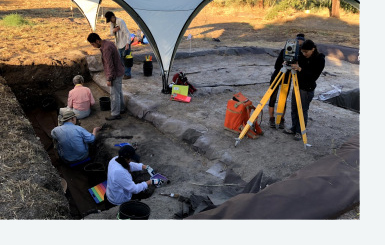 Researchers have already discovered several sets of human remains at the project site—key findings that have provided insights to the genetic continuity at the Mesolithic-Neolithic transition, enabling a better understanding of past human diets and mobility. Volunteers are contributing to the conservation of one of Portugal’s National Monuments, the Mesolithic shell mounds of Muge, while finding clues about this transition between populations, helping us better understand our cultural societies today.
Researchers have already discovered several sets of human remains at the project site—key findings that have provided insights to the genetic continuity at the Mesolithic-Neolithic transition, enabling a better understanding of past human diets and mobility. Volunteers are contributing to the conservation of one of Portugal’s National Monuments, the Mesolithic shell mounds of Muge, while finding clues about this transition between populations, helping us better understand our cultural societies today.
.
Discovering Ancient Societies in Portugal gave me the opportunity to participate in a high-quality, rigorous research project. The principal investigator and his team took great pains to help us develop our field investigation skills and explain the larger context and objectives of the project. It was a very rewarding experience.
— Lee Morgenthaler
.
.
9. Unearthing the Ancient Secrets of Angkor in Cambodia
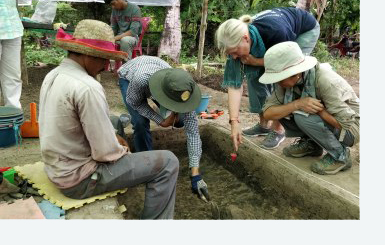 The Angkorian Empire was home to the world’s largest pre-industrial city, but a series of droughts and monsoon-floods pushed the city’s intricate water management network beyond its limits. However, the region was never completely abandoned. By studying the everyday lives of the “non-elites,” volunteers are assisting researchers in increasing their scientific knowledge regarding these environmental changes and the strategies that individuals, households, and communities used to maintain their resiliency.
The Angkorian Empire was home to the world’s largest pre-industrial city, but a series of droughts and monsoon-floods pushed the city’s intricate water management network beyond its limits. However, the region was never completely abandoned. By studying the everyday lives of the “non-elites,” volunteers are assisting researchers in increasing their scientific knowledge regarding these environmental changes and the strategies that individuals, households, and communities used to maintain their resiliency.
.
Do you enjoy being surrounded by nature? Getting your hands dirty? Learning all sorts of interesting info about Cambodia and Asia? Feeling your heart race when you find pottery/bones from 800 AD? Interacting with the locals who help on the dig? Talking with the villagers who stop by to practice their English while you wash pottery shards, right next to a crew restoring temple Prasat Basaet? Then this expedition is for you! I loved every minute of every day.
— Shannon Miller
.
.
10. Restoring Fire, Wolves, and Bison to the Canadian Rockies
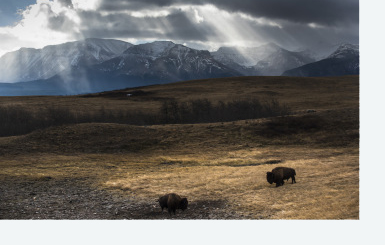 Waterton Lakes National Park and the Blackfoot (Kainai) tribal lands outside of the park are some of the few remaining places where you can get a sense of North America as it was before Euro-American settlers arrived. Volunteers help scientists understand how three forces of nature—fire, wolves, and bison—shape this ecosystem. Teams work alongside members of the Blackfoot tribe to collect data that are shaping national conservation and management policies in preparation for returning bison to one of the wildest, most ecologically intact North American landscapes.
Waterton Lakes National Park and the Blackfoot (Kainai) tribal lands outside of the park are some of the few remaining places where you can get a sense of North America as it was before Euro-American settlers arrived. Volunteers help scientists understand how three forces of nature—fire, wolves, and bison—shape this ecosystem. Teams work alongside members of the Blackfoot tribe to collect data that are shaping national conservation and management policies in preparation for returning bison to one of the wildest, most ecologically intact North American landscapes.
.
Participating in this Earthwatch expedition brought the concepts of science, climate change, carnivore behavior, and ecology together for me. Placing myself in the field with a lead scientist who has an in-depth knowledge and experience with all of these topics was fabulous. This expedition is done in partnership with the Blackfoot tribe and we were able to participate in some key activities with them. I walk away from this experience with even more appreciation for what science contributes to projects like this, as well as the importance of this work and what it means to future critical decisions that will impact the land, and the people and species that live on it.
— Yvonne Leach
.
To learn more about any of these projects, visit the Earthwatch website, email us at info@earthwatch.org, or call us at 1-800-776-0188.
.
Sign up for the Earthwatch Newsletter
Be the first to know about new expeditions, stories from the field, and exciting Earthwatch news.